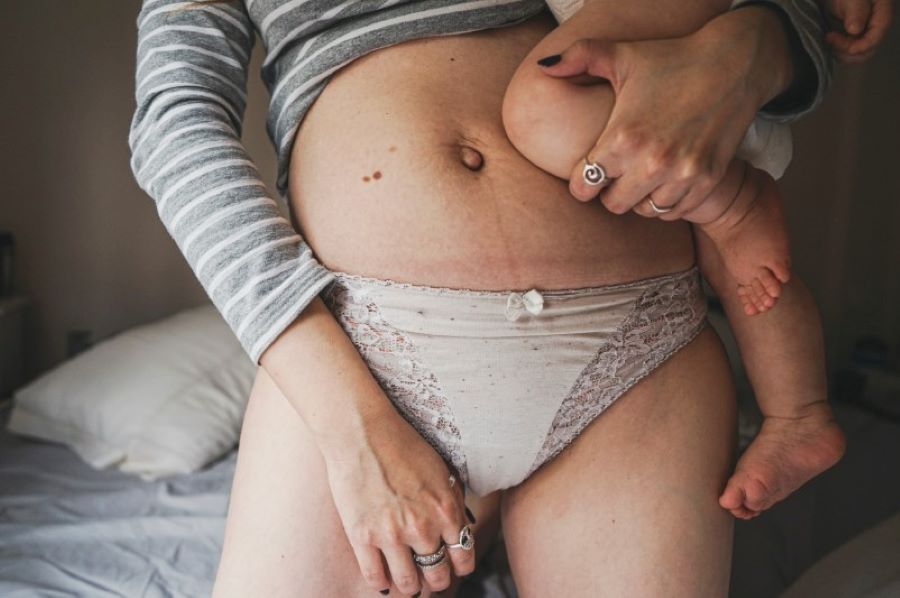Open Birthing Pattern Signs and Symptoms
Open Birthing Pattern Signs and Symptoms
As clinicians, we need to listen to what our clients say and learn about their complaints to understand what we should focus on during our assessment and treatment. That is our job. Plus, we need to figure out what the body has gone through in whatever injury pattern our client may have experienced.
Open Birthing Pattern
What did the pelvis experience with birth, especially considering the client’s labor position when the baby came out? In my experience in working with thousands of postpartum clients, I have found the pelvis doesn’t always go back to its original position after birth. I call this pattern in the pelvis the Open Birthing Pattern.
Indications of an Open Birthing Pattern
What client complaints may indicate they are still in the Open Birthing Pattern?
- Sitting unevenly or feeling uncomfortable
- Discomfort when laying on a hard surface
- Low back pain
- Perineal heaviness that is constant throughout the day
- Pelvic floor muscle weakness
- Insertional pain with intercourse
- Hypertonic pelvic floor muscles
- Pelvic pain in pregnancy
Sitting unevenly or feeling uncomfortable
The most straightforward complaint directly related to the Open Birthing Pattern is sitting unevenly or feeling uncomfortable or different than before birth. This is a sign that the ischial tuberosities are not in their original position and that one may be more off-centered. Others might complain of tailbone pain with sitting if their pelvis is still open from birth.
Discomfort when laying on a hard surface
Another easily identified complaint is discomfort when laying on a hard surface. They complain that their sacrum hurts when lying supine. This indicates that the sacrum is stuck in flexion and needs support moving into extension again. Sacral flexion is part of the Open Birthing Pattern.
Low back pain
When the sacrum is stuck in flexion and the ischiums are splayed, some clients may complain of low back pain. This pattern is highlighted by tension in their low back with flexion and extension of their lumbar spine. All this tension subsides when the pelvis is brought back to its original position.
Perineal heaviness that is constant throughout the day
While heaviness in the perineal area may be a complaint that makes us think of prolapse, I have found that when you question a client further, you will find that they don’t have the typical feeling of the heaviness getting worse by the end of the day. Perineal heaviness that stays constant throughout the day is more associated with the open birthing pattern because once you close the bones back up together, the heaviness disappears instantly.
Pelvic floor muscle weakness and insertional pain with intercourse
Two super-common symptoms after birth are pelvic floor muscle weakness and insertional pain with intercourse. While many different things could be contributing to these issues, a splayed open pelvis is one that I find repeatedly in my postpartum clients. You’ll be surprised to find how correcting the pelvis first significantly improves these two complaints. You still have to address the muscles themselves, but working with the bones first makes less work for you with the muscles.
Hypertonic pelvic floor muscles
Hypertonic pelvic floor muscles are a significant sign of the Open Birthing Pattern because the muscles are trying to hold the bones together. You know this is the case if you work to release the pelvic floor muscles and your client’s pelvic pain worsens. You just took away their stability. If the bones can’t offer stability, the muscles will do their best to provide it. Bringing the bones back to their original position allows the muscles to relax independently or with a little more help from you.
Pelvic pain in pregnancy
Another key indicator of the open birthing pelvic pattern is in pregnancy. If your clients come in complaining of pelvic pain and it is a secondary pregnancy, you must ask them if they had this pain in their first pregnancy. If the answer is no, then the pelvic pain is most likely from the first birth, and their bones are stuck in the Open Birthing Pattern. When you bring the pelvic bones back to their original position, your client’s pelvic pain goes away, often times in one session when you know what patterns to look for.
Learning to Treat the Open Birthing Pattern
So, there you have it – all the complaints that can indicate your client is dealing with an Open Birthing Pattern! It truly is magical when you know how to correct these pelvic patterns and how easily these complaints can be minimized. Learn how to correct the 3 most common pelvic patterns after birth in the Treating the Postpartum Pelvis online course.
About the Author: Lynn Schulte is a Pelvic Health Therapist and the founder of the Institute for Birth Healing, a pelvic health continuing education organization that specializes in prenatal and postpartum care. For more information, go to https://instituteforbirthhealing.com

